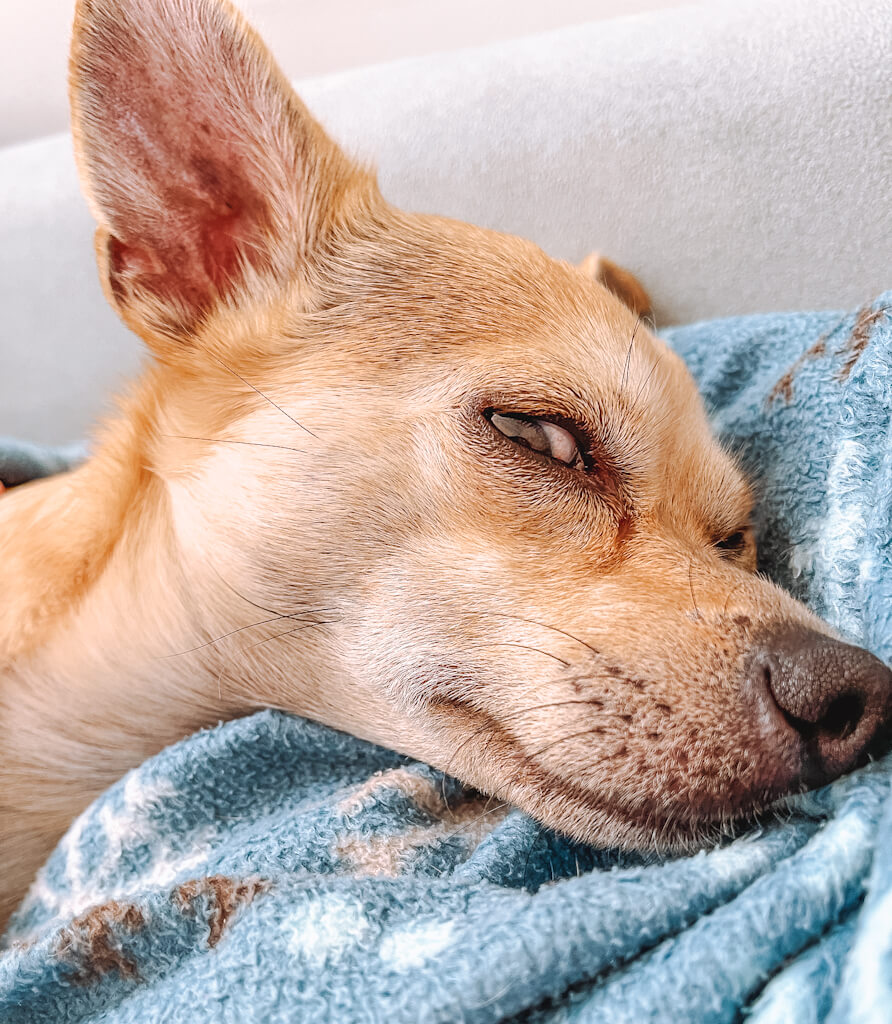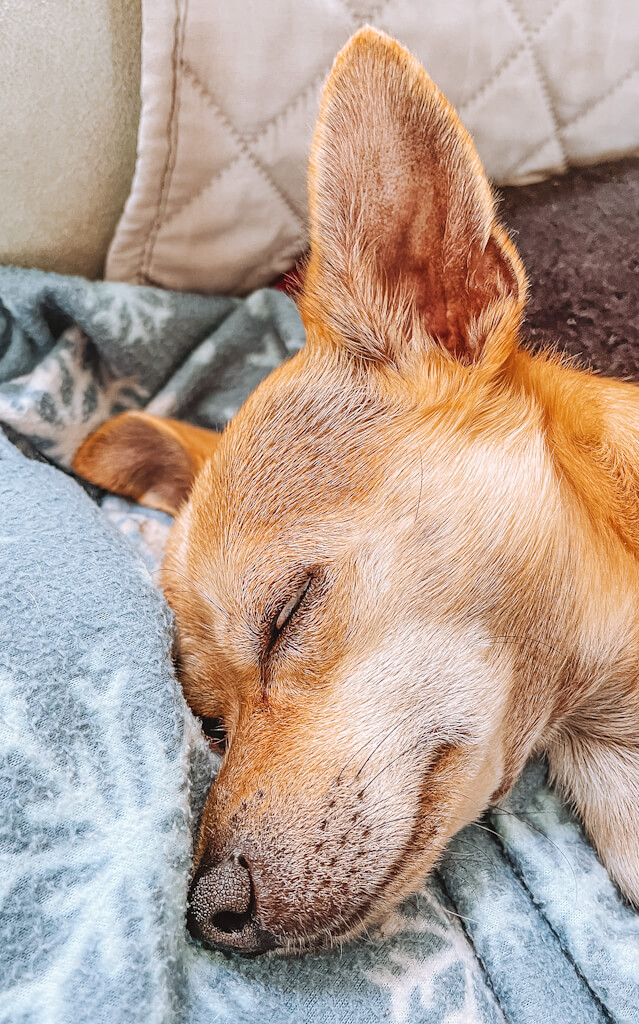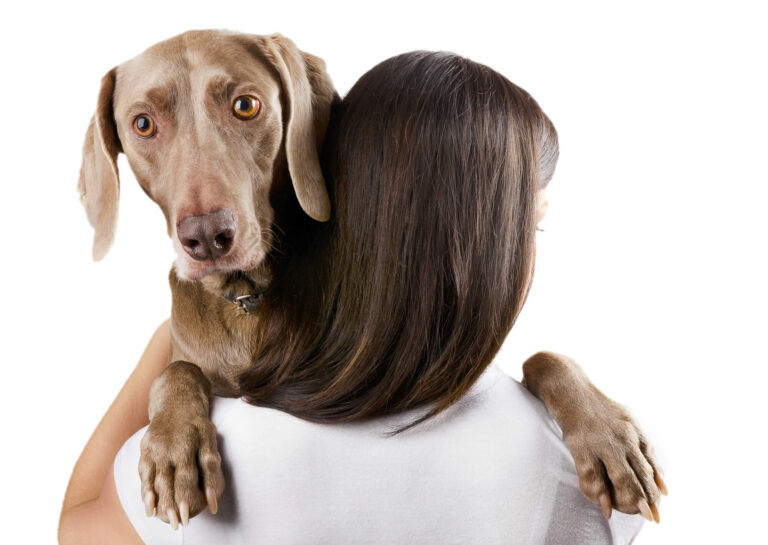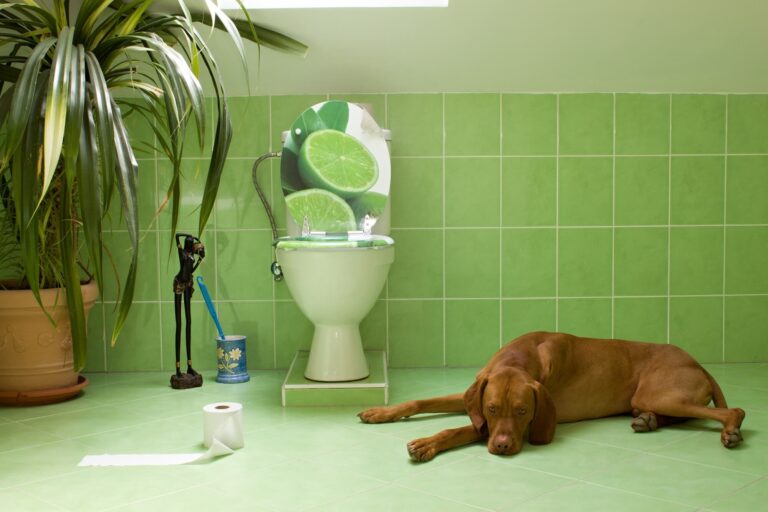Why Do Dogs’ Eyes Roll Back When They Sleep (Is It Normal?)
“Why do dogs’ eyes roll back when they sleep?”
This question probably has crossed your mind while watching your furry friend snooze.
Those moments when your dog’s eyes seem to wander behind closed lids can be both intriguing and concerning.
Our Chihuahua Leo’s eyes roll back a lot, so is it normal or is there something more to it?
Let’s uncover the reasons behind this quirky behavior that adds another layer of charm to our canine companions and find out if it’s normal.

13 Reasons Why Dogs’ Eyes Roll Back When They Sleep
1. REM Sleep/Dreaming
When your furry buddy is catching some shut-eye, they’re not just snoozing, they’re dreaming too, just like us humans.
It’s during this time, when they’re in the REM (Rapid Eye Movement) phase of sleep, that their eyes move around or roll back, showing the white of their eye.
Dogs can also make noises and twitch.
Since Chihuahuas sleep a lot, we have noticed our Chihuahua’s eyes roll back lots of times during his dreams. He loves sleeping between our legs and in the sun.
So if your dog’s eyes keep rolling back, it’s because their brain is active, their muscles are relaxed, and dreams are happening.

2. Seizures
Seizures can make a dog’s eyes roll back, too.
When a seizure hits, their muscles might go all stiff, and that can make the eyes roll.
If you ever see your pup have a seizure or suspect they had one, it’s a good call to contact your vet.
They’ll be able to figure out the root cause, whether it’s something like epilepsy or another health issue.
Also, being able to tell the difference between dreaming and a seizure is key since dogs can have a seizure while they’re sleeping.
When your pup is just dreaming away, you might notice them twitching, moving their legs, and even making adorable little sounds in their sleep.
When it comes to seizures, it’s a different story.
During a seizure, your dog’s body might go stiff and their movements can get pretty intense.
You might see them drooling, panting, urinating, or seeming confused and out of it afterward.
Dogs that are dreaming can easily be woken up, while dogs having a seizure cannot.
3. Third Eyelid
Dogs have a third eyelid called the nictitating membrane.
It protects and lubricates the eye.
So, when your pup is catching some Zs, this little membrane might sneak in and cover part of the eye, making it look like it’s rolling back.
No worries though, it’s just a natural move to keep their peepers comfy and cozy while they snooze.
4. Nystagmus
Nystagmus is a condition in which the eyes move involuntarily.
This can cause the eyes to appear as if they are rolling back.
Nystagmus can be caused by a variety of factors, including neurological conditions and inner ear problems.
Nystagmus is a symptom of vestibular disease.
Types of nystagmus:
- jerk nystagmus: most prevalent, the eyes drift slowly and then suddenly jerk back the other way
- pendular nystagmus: circular eye movements, resembles the back-and-forth swing of a pendulum
- horizontal nystagmus: eyes flicker side-to-side
- vertical nystagmus: eyes flicker up and down
If you suspect your dog has nystagmus, they need urgent vet care.
5. Cherry Eye
Cherry eye is when a dog’s third eyelid gets inflamed and decides to say hello from the inner corner of the eye.
This small red mass earns the name “cherry” eye.
It can make the eye look like it’s rolling back.
Certain breeds like brachycephalic (flat-faced) breeds, Bloodhounds, Cocker Spaniels, Pugs, and Beagles are more likely to deal with this cherry-eye situation.
This condition requires veterinary treatment, and surgery might be on the table.

6. Stroke
When a stroke hits, the normal blood flow to a dog’s brain is disrupted.
Strokes can be caused by a blood clot (ischemic stroke) or by bleeding in the brain (hemorrhagic stroke).
One of the things that might happen during a stroke is wonky eye movements like dogs’ eyes rolling back.
But it’s not just about eye rolls, there can be other signs too like a head tilt, struggling to move, acting confused, or having trouble balancing.
Strokes are no joke and an immediate vet visit is a must.
7. Tumors or Cysts
Sometimes, if your dog’s eyes are taking a little rollercoaster ride to the back of their head while they snooze, it could be due to some unwelcome visitors – tumors or cysts.
These pesky growths can set up camp in the eye, surrounding the eye, or even the brain,
These growths have the potential to disrupt the normal functioning of eye muscles and nerves, causing various unusual behaviors, like eyes rolling back.
Tumors and cysts can be benign or malignant and can cause swelling, inflammation, and discomfort.
So, if you spot any odd-looking lumps or bumps around your pup’s peepers, don’t be shy – make an appointment with your vet.
8. Bell’s Phenomenon
Bell’s phenomenon is a protective reflex that occurs in humans and dogs when their eyes are closed tightly or if they are about to be touched or poked in the eye.
It’s Mother Nature’s way of keeping our peepers safe from any unwanted pokes or prods.
The fancy term for this muscle action is “superior rectus muscle contraction,” and it moves the eye up and out of harm’s way.
As this defense mechanism does its thing, you might just catch those eyes rolling back.
It’s a natural reaction that helps ensure your pup’s peepers stay safe and sound.
9. Head Trauma
If your dog takes a bump to the noggin, it can lead to all sorts of wonky stuff, including some funky eye movements.
It’s like a domino effect – a knock to the head can mess with different parts of the body, including how those peepers move.
If you suspect your dog has had a run-in with head trauma, it’s super important to get your furry friend to a vet ASAP.
They’ll be able to assess the situation, check out those eyes, and make sure everything’s A-OK.

10. Strabismus
Strabismus is a condition in which the eyes are misaligned.
With Strabismus, the eyes might look like they’re rolling back.
Strabismus can be caused by a variety of factors, including neurological conditions, genetics, scar tissue, and muscle weakness.
Now, if your pup has this eye misalignment, don’t fret. There are ways to give those peepers a little tune-up.
If it’s due to a nerve disorder, tackling the root issue is the game plan. Surgery and muscle therapy are also options.
11. Neurological Conditions
When it comes to your pup’s eyes rolling back, neurological conditions like epilepsy, vestibular disease, seizures, or brain tumors might just be the culprits.
Signs of neurological conditions include:
- Head tilt
- Abnormal movements
- Seizures
- Unusual, rapid eye movements
- Muscle tremors or twitching
- Disorientation
Epilepsy causes all sorts of electrical chaos in the brain. And when that happens, it can trigger wild eye movements.
Brain tumors and other conditions can mess with the brain’s harmonious flow and throw off the eyes.
If you suspect your furry friend might be dealing with these neurological conditions, reach out to your vet.
They’ll make sure your pup gets the care they need.
12. Vestibular Disease
When your furry friend gets hit with vestibular disease, it’s like their inner ear decides to go a bit wonky.
The eyes might just join the party too, doing a bit of abnormal eye movements called “nystagmus.”
Symptoms of vestibular disease include:
- Sudden loss of balance
- Disorientation
- Head tilt
- Irregular jerking eye movements (nystagmus)
- Reluctant to stand or walk
- Leaning
There are many causes of vestibular disease.
It could be due to a middle or inner ear infection.
Ear-damaging drugs or a rough bump on the noggin can also play a role.

And let’s not forget about tumors or hypothyroidism.
When no specific cause is found, it’s called idiopathic vestibular syndrome.
The good news? Most of the time, pups bounce back in about two to three weeks, but they could have some wobbling or a head tilt that sticks around for life.
13. Eye Injury
Sometimes, accidents happen!
When the eye takes a hit, it’s like a ripple effect – you might see some funky eye movements going on.
Dogs love running, playing, and sometimes getting a bit wild.
But with all that action, there’s a chance an eye injury could happen.
So, what’s the game plan if you suspect your four-legged pal might have an eye injury?
It’s time to dial up your vet so they can’t check your dog’s peepers.

Signs and Symptoms of Eye Problems
Keeping an eye on your pup’s peepers is crucial for their well-being! Here are some key signs and symptoms of eye problems to watch out for.
- Redness: If your dog’s eyes appear red or bloodshot, it could be a sign of irritation or infection.
- Discharge: Any discharge from the eyes, such as pus or mucus, can indicate an infection or injury.
- Cloudiness: Cloudiness can be a sign of cataracts or other eye conditions.
- Squinting: Dogs may squint if they are experiencing discomfort or pain in their eyes.
- Bulging: Bulging eyes can be a sign of a serious condition such as glaucoma or a tumor.
- Excessive tearing: Also known as epiphora, can be caused by a variety of factors, including allergies, infections, and blockages in the tear ducts.
- Swelling and inflammation: Swelling and inflammation in and around the eye can be caused by a variety of factors, including allergies, infections, and injuries.
- Rubbing or pawing at Eyes: Dogs may rub or paw at their eyes if they feel discomfort or itchiness.
If you notice any of these symptoms, it’s important to take your dog to the vet for a proper diagnosis and treatment.
Is It Normal For A Dog’s Eyes to Roll Back When They Sleep?
If you’ve ever seen your dog’s eyes roll back when they’re sleeping, don’t fret—it’s perfectly normal doggie behavior!
When our furry pals hit that REM (Rapid Eye Movement) stage of slumber, their peepers start doing a little dance, and sometimes that means their eyes roll back.
This is when dogs are in their deepest sleep and most likely to have those adorable doggy dreams.
So, no need to hit the panic button if you catch your pup with eyes in the back of their head while they snooze.
It’s a natural, harmless thing as long as they don’t have any accompanying issues.
Now, if your dog is experiencing other unusual symptoms, it’s always a good idea to have a chat with your vet to rule out any potential health concerns like Nystagmus, Cherry Eye, or Vestibular Disease.
Why Do Dogs Sleep With Their Eyes Open?
Dogs sometimes sleep with their eyes open as a survival strategy. It’s like a built-in security system.
Even in slumber, they want to stay alert to potential threats in their environment. Dogs might even sleep on your shoes or take a snooze in the bathroom.
So, while it might look a bit spooky, it’s just their way of making sure they’re aware of what’s happening around them.
Dogs also have a third eyelid, called the nictitating membrane, that helps protect and lubricate their eyes.
This membrane closes partially when dogs sleep, which is why their eyes may appear to be partially open.
When to Seek Veterinary Help
While it’s normal for dogs’ eyes to roll back when they sleep, there are certain situations where you should seek veterinary help.
Here are some signs that indicate your dog needs medical attention.
- Abnormal eye movements: If your dog’s eyes start doing some funky rapid back-and-forth or circle dances while they sleep, it could be a sign of something more serious going on in their noggin.
- Head tilt: Sometimes, a tilted head that’s not just a cute pose for a photo can be a sign of an ear or neurological problem.
- Excessive eye discharge: If your furry buddy has a constant leaky faucet situation going on with their eyes, it might be due to an infection or something else that needs attention.
- Persistent redness or swelling: A chronically red or swollen eye could signal an underlying issue that needs a vet’s expert eyes.
- Unusual behavior changes: If your doggo starts acting out of character or shows signs of discomfort or pain, it’s worth discussing with the vet to rule out any eye-related problems.
Summary
Now you’ve got the scoop on “why do dogs’ eyes roll back when they sleep.”
This eye-rolling phenomenon is usually just another quirky aspect of being a dog.
It’s a regular occurrence during their natural sleep cycle, especially when they hit the REM stage.
However, if you notice any abnormal eye movements, persistent discomfort, or other unusual behaviors in your dog, it’s best to consult your veterinarian and get their eyes checked.
FAQs
How to Tell if Your Dog Is Having A Seizure in His Sleep?
If your dog is having a seizure in his sleep, he may experience muscle twitching or jerking, loss of consciousness, drooling, or vocalization. It can be a bit unsettling, but staying calm is key. If your pup has these episodes often, it’s important to chat with your vet. They can dig into what’s causing it and work out a plan to help your dog out.
Is It Normal for A Dog’s Eyes to Move While Sleeping?
Yes, it is normal for dogs’ eyes to move while they sleep, particularly during the REM stage of sleep. This movement is a sign that your dog is experiencing a normal sleep cycle and is not cause for concern.
Do Dogs Dream?
Yes, dogs do dream. During the REM stage of sleep, dogs may dream and experience muscle twitching or jerking. It’s believed that dogs dream about experiences from their day and may even replay memories while they sleep.
Related posts:






